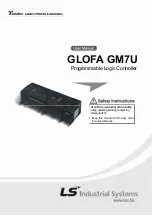MPC563XM Reference Manual, Rev. 1
Freescale Semiconductor
769
Preliminary—Subject to Change Without Notice
23.4.1.1.2
Entry Point Address Generation
The Entry Point address within the Entry Table is determined by the Function assigned to the Channel, the
state of the Channel, the type of event, and the condition encoding scheme. Together with the Entry Table
base address, they form the Entry Point Address at the SCM, as shown in
.
Figure 23-28. Entry Point Address (host address offset)
The type of event and channel state are coded in the Encoded Channel Conditions field C[4:0], according
to one of two encoding schemes:
•
Standard Entry Table Condition encoding scheme, shown in
Service Requests.
•
Alternate Entry Table Condition encoding scheme, shown in
, which focus on other
events and state decoding.
The events that take part on condition encoding generate a Service Request, and have four origins:
1. Match Recognition (caused by greater/equal match, or equal-only, between the value TCR1/2 and
the value stored in the channel match registers). eTPU channels support single and double match
in various modes of match recognition; see
Section 23.4.5.2, “Match Recognition
2. Transition Detect Service Request (channel input signal transition detection of a selected edge).
The eTPU channels support single and double transition, which together with the double match
options provide various modes of transition detection; see
Section 23.4.5.3, “Transition Detection
3. Channel Linking Service Request (microcode writing the channel number to the LINK register).
Link service request allows one channel to activate another (see
Section 23.4.5.5, “Channel Link
4. Host Service Request (Host writes a non-zero value to the HSR bits of the channel; see
Section 23.4.2.5, “Host Service Requests
NOTE
Even if a Transition or Match Service Request is inhibited (by channel
mode/state or SRI), the Transition Detection and Match Recognition are
taken into account for condition encoding. That is, the MRL1/2 and TDL1/2
flags are used, not their respective Service Requests.
Columns Host Request Bits, Link Request, Match1/Trans2, and Match2/Trans1 determine the type of
event. A non-zero value in these columns represents the recognition of the event, while “x” indicates that
ETB[4:0]
(ETPUECR)
(ETPUCxCR)
Encoded
(C4-C1)
Channel
Conditions
CFS[4:0]
Encoded
(C0)
Channel
Conditions
A5-A2
A10-A6
A1
A15-A11
Half-word Select
Word Address
A0=0


















